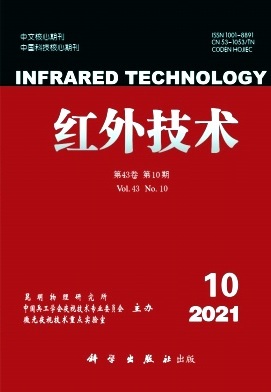
Quantum dots (QDs), which are also known as semiconductor nanocrystals, have been widely applied in the design and development of photoelectric detectors and solar cells because of their low manufacturing cost and unique optical properties. The synthesis of QDs is an important component in the preparation of photodetectors and solar cells. In this review, several different QD synthesis technologies, various QD-based photodetectors and solar cells are summarized, and the advantages and disadvantages of different types of QD films are compared. Lastly, we investigated the development of QD films.
This article systematically introduces the testing and analysis methods used by domestic and foreign research institutions to study the superlattice interface. To evaluate the quality of the superlattice interface, the InAs/GaSb type-II superlattice interface type, interface roughness, abruptness, and other characteristics can be tested and analyzed using Raman spectroscopy, high-resolution transmission electron microscopy, a scanning tunneling microscope, secondary ion mass spectroscopy, and X-ray photoelectron spectroscopy. Photoluminescence spectroscopy, high-resolution X-ray diffraction, Hall measurements, and absorption spectroscopy can be used to study the effect of the superlattice interface quality on the energy band, crystal quality, and optical properties of superlattice materials.
Graphene-based photodetectors have the advantages of good compatibility and wide-band response, and their readout circuits are similar to traditional detectors such as bolometers. However, graphene photodetectors are generally photon types whose responsivity, power consumption, and integration time are significantly different. Here, the readout circuits of pure graphene, graphene-lead sulfide heterostructure, lead sulfide, and typical bolometer combined with the measured device parameters are studied. Simulation results show that because of its high responsivity, when the same output voltage is achieved, the integration time of the graphene-lead sulfide heterostructure detector is the lowest, which is more conducive to high-frame-rate applications. However, compared with the bolometer, the graphene detector has a higher power consumption, and the analysis shows that a reasonable device structure design can effectively reduce the power consumption. This study can provide a reference in the selection of the readout circuit and parameter design of a new type of two-dimensional material photodetector.
The p-on-n HgCdTe infrared detector has advantages of long minority carrier life, low dark current, high R0A product, and is an important device structure in the development of high-temperature detectors along with long wavelength infrared (LWIR) and very LWIR(VLWIR) detectors. However, there are few local reports on arsenic-implanted doped p-on-n long-wave HgCdTe detectors. To meet the urgent application requirements of high-performance long-wave detectors in the military and aerospace fields, studies have focused on long-wavelength p-on-n HgCdTe infrared detector annealing technology for As ion implantation. Secondary ion mass spectrometry(SIMS) was used to analyze the distribution of As ion concentration after implantation and annealing, and a semiconductor parameter tester was used to characterize the I-V characteristics of the pn junction. The results show that under mercury-rich conditions at 430℃ for 0.5 h and at 240℃ for 20 h, the As was activated. Further, the As implanted long-wavelength 15-.m 640×512 p-on-n HgCdTe infrared focal plane detector was successfully fabricated, and the operable pixel factor of the detector was greater than 99.7%. This research is of great significance for the fabrication of LWIR and VLWIR mercury cadmium telluride p-on-n focal plane detectors.







